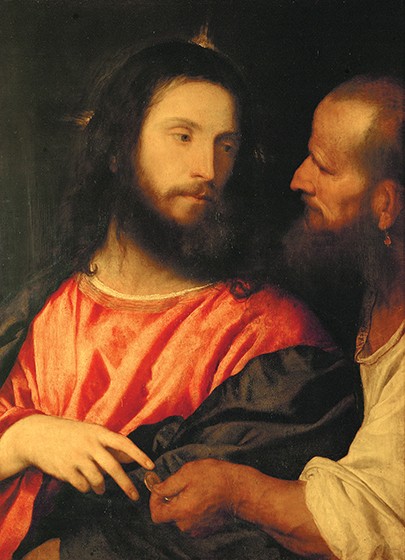The Tribute Money, by Tiziano Vecellio (Titian) (ca. 1488–1576)

The Tribute Money is the earliest signed painting by Titian. According to the Renaissance biographer Giorgio Vasari, the painting was executed for a cabinet door containing a coin collection belonging to Alfonso I d’Este, Duke of Ferrara. A scene rarely depicted in the visual tradition, it may have had special meaning for the duke, whose territories crossed into the boundaries of both the Roman Empire and the Papal States. In Matthew 22:15–22 (cf. parallels in Mark 12:13–17; Luke 20:2–26), Christ is asked by religious authorities if it was acceptable to pay taxes to Caesar. In an intimate portrayal that focuses on only two characters, Titian captures the moment that Jesus, referring to a coin’s image, replies, “Render unto Caesar the things that are Caesar’s and unto God the things that are God’s.” Alfonso, who had been excommunicated by the papacy, presumably concluded that the church should spend more time attending to ecclesiastical matters and less effort in expanding its political holdings and influence.





